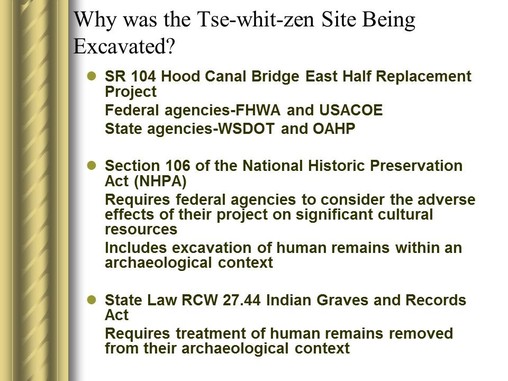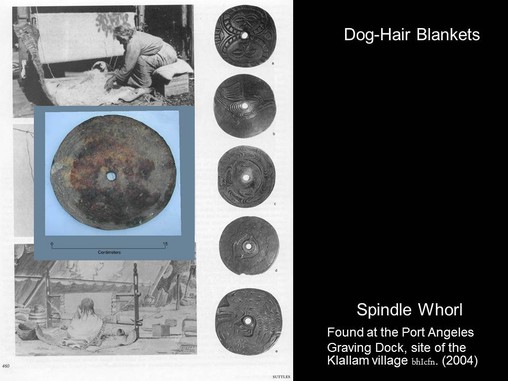Written by Jamie Valadez and Carmen Watson-Charles. This information has been modified, only to add additional facts by Brenda Francis, Communicatoins Manager
In August of 2003, artifacts and human remains were found at the village site called č̕ixʷícən, located at the base of Ediz Hook in Port Angeles, Washington. The site is the largest pre-European contact village site excavated in Washington State.
Nestled in the crook of what is now Port Angeles Harbor, the village of Tse-whit-zen (pronounced ch-WHEET-son) flourished for over 2,700 years. The ancient village was one of many in the Klallam territory, which stretched from the Hoko River on the Strait of Juan de Fuca into the Hood Canal. The earliest confirmed settlement at the village site dates back to 750 B.C. — approximately the same time Rome was founded.
The site was found after being buried for 100 years, while construction took place to build parts for the Hood Canal Bridge. During this time construction stopped and the Department of Transportation met with the Lower Elwha Klallam Tribe. Together they came up with a plan to remove the artifacts and human remains so that construction could continue. In March of 2004 an agreement and plan was signed.
Construction and the removal of artifacts and human remains began in April of 2004. Eight months later, in December of 2004, all construction stopped. Although there were over 100 archeologists and tribal members working together, there were still numerous human remains and artifacts to be recovered. There were a total of 335 human remains and over 100,000 artifacts recovered.
It is well recorded in historic documents that this area was a Klallam village site. Over a period of 60 years there were many mills built that desecrated the village site, but also preserved the site because when the mills were built, they covered the ground with 15 to 30 feet of back fill.
Facts


